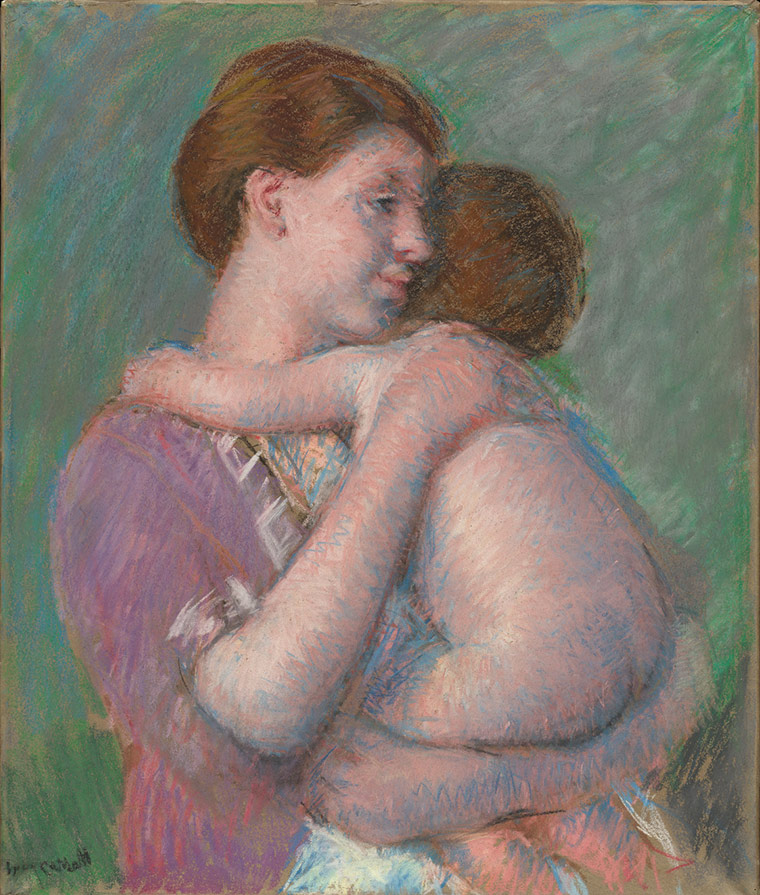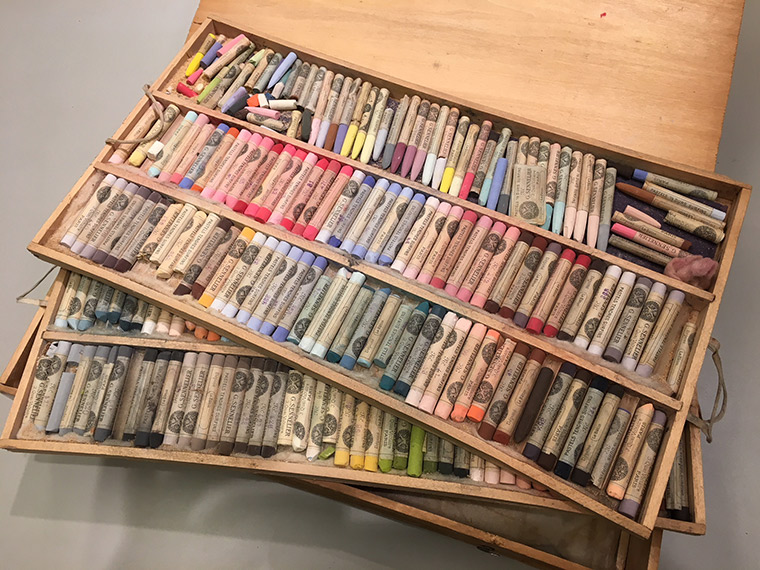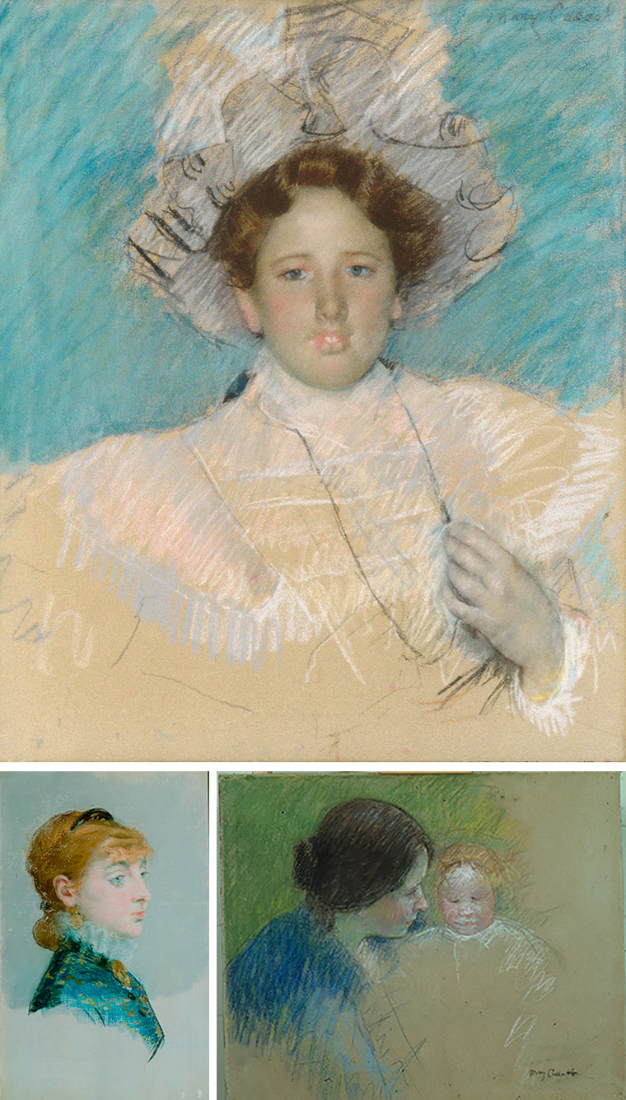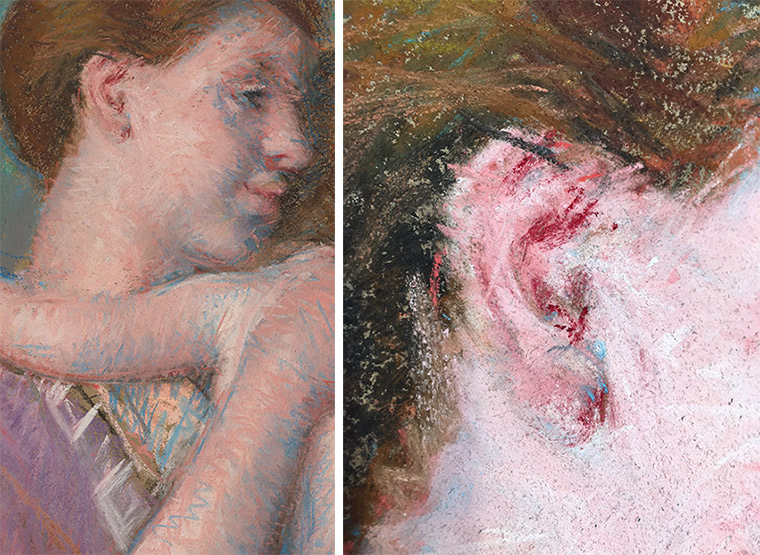Introduction
At the end of the nineteenth century and the beginning of the twentieth century, the western world was characterized by social turmoils, technological innovations, and revolutionary scientific disciplines that contributed to shaping modernity. Inevitably, the progress of humankind influenced the artistic movements, and most of the artworks of that period can be viewed from the modernist perspective.
The work of Mary Cassatt, a prominent impressionist artist, mirrors the rise of the feminist movement and the birth of the psychoanalysis. This paper will analyze Mary Cassatt’s Mother and Child from a psychological perspective, highlighting how her unique technique made of soft pastel colors and loose brushwork reflects the coeval psychoanalytic research on the child-mother relation in the early stage of life. The choice of the painting by Cassatt is functional to highlight the liaisons between psychology and art, while the analysis is based on direct observation.
Background
At the turn of the twentieth century, Sigmund Freud published The Interpretation of Dreams, and his work opened the door for the exploration of the ego, the psyche, and the unconscious. Among other themes, Freud underlined the synergetic relationship between psychoanalysis and art and influenced several avant-garde movements, including Dadaism and Surrealism (Stavovy, 2017). Artists of the caliber of André Breton, Salvator Dalì, Giorgio de Chirico, and Marcel Duchamp explored the dual relationship between conscious reality and the unconscious. In the same years, prominent psychoanalysts studied the mother-infant relationship.
Melanie Klein described emotions and representations of early childhood relationships and contributed to the formation of the object relation theory. Donald Winnicott stressed the importance of the parental role and the environment during the first years of childhood. The concept of “good enough” mother opposed to the idea of the perfect mother was groundbreaking, highlighting how the spasmodic research for perfection might harm the relationship between infants and parents (Sidebotham, 2017).
The artwork Mother and Child (1914) by Mary Cassatt, shown in Figure 1, explores the mother-child relationship through a sapient and targeted use of impressionist painting techniques and the lens of a modern woman involved in the feminist movement. As other feminine subjects painted by the American impressionist, the mother spreads the quiet awareness of women at the turn of the twentieth century.

Analysis of the painting
At first glance, the canvas strikes for the peaceful harmony and the feel of protection that it transmits to the viewer. Overall, it reflects the caring environment theorized by Winnicott while composition, brushwork, and color palette suggest an almost complete identification of the mother with her child. The former adapting her ego to the needs of the infant, the latter building their pattern behaviors within the safe and emphatic mother-child space. The violet color of the mother’s dress creates a continuity with the tones of the skins and just some splashes of white define the drawing. The background, light sea green with a touch of jade, conveys a deep feeling of serenity and it is matched by the blue undertones on the skin.
The choice of pastels as a painting medium and the brushwork technique reveal other interesting aspects underlying the making of Mother and Child. Pastels were especially appreciated among impressionists as they exalted their unique reflectance and represented the perfect medium to convey the new aesthetic ideas that stressed spontaneity (Shelley, 2018). As a female artist deeply involved in promoting the self-determination of women, Cassatt utilized pastels also to spread modernism. If the complete abandon of the child on the mother’s body is a bright rendition of spontaneity, the feeling of quietness that emanates from the canvas is an effective transposition of the modern concept of the good-enough mother. Also, an in-depth analysis of the brushwork shows how it was specifically tailored to express coeval psychological ideas.

The drawing technique of Cassatt was excellent, and most of her artworks are characterized by clean and solid lines and loose brushwork, as shown in Figure 3. From this perspective, the American painter diverged from most Impressionists who preferred imperfect edges and melted shapes (Scott, 2019; Shelley, 2018). However, in Mother and Child, Cassatt utilizes a different technique which mirrors her attempt to create an adequate visual language to deliver modern ideas.
Thus, overlapping strokes, unfinished sections of the canvas, and an evident lack of details in the mother’s face, as shown in Figure 4, add a component of abstraction, and the mother almost melts herself in the archetypal mother-infant relationship. The painting is consistent with Klein’s two-person psychological approach and the modern interpersonal neurobiological theory, where attachment to early childhood caretakers results in an inner working model to develop relationships in life (Chambers, 2017). In early life, mother and child create an undefined and emphatic space where egos melt through neural alchemy that will influence the whole life of the infant.


A painting therapy perspective
Composition, tones, and the overall quietness that emanates from the Mother and Child by Mary Cassatt suggest that the painting could be successfully used in painting therapy. A recent study (Wang, Xu, Wang & Zhang, 2016) support the idea that orderly images and harmonious aesthetic forms can give persons suffering from mental impairment some certainty. Just a look at the picture evokes the maternal wrapping warmth, transmits a sense of peace, and invites to abandon in the mother’s hug. From the painting therapy perspective, the merging of the infant with the mother’s body seems to satisfy the need for protection and empathy of people and could have some resting and curative effects in cases of mental illnesses.
Conclusion
The revolutionary psychoanalytical theory and the modern feminist ideas at the turn of the twentieth century seem to converge in the work of Mary Cassatt. From this perspective, the painting Mother and Child of 1914 is exemplary. On the one hand, the pastel technique, is functional to convey the modern concept of the good-enough mother through soft colors, which suggest a protective and comfortable environment. On the other hand, the overlapping brush strokes and the unfinished sections suggest a merging of the egos of the mother and the infant, in adherence to the coeval two-person psychology and the more modern interpersonal neurobiology conceptualization. The overall quite atmosphere of the painting suggests that it could provide some support to painting therapists in treating individuals suffering from mental conditions.
References
Chambers, J. (2017). The neurobiology of attachment: From infancy to clinical outcomes. Psychodynamic Psychiatry, 45(4), 542–563. Web.
Scott, D. (2019). Mary Cassatt – Artist spotlight. Web.
Shelley, M. (2018). Mary Cassatt in a modernist light: A close look at Mother and Child. Web.
Sidebotham, C. (2017) Good enough is good enough. British Journal of General Practice, 67(360), 311. Web.
Stavovy, T. (2017). The evolution of psychoanalytic thought: A brief view through the lens of Western art and history: Freud and beyond. Australasian Psychiatry, 25(3), 239–242. Web.
Wang, Y., Xu, J., Wang, C., & Zhang, J. (2016) A quality software system designed for mental disease treatment through artistic painting. International Journal of Education and Management, 1(1), 9-14. Web.